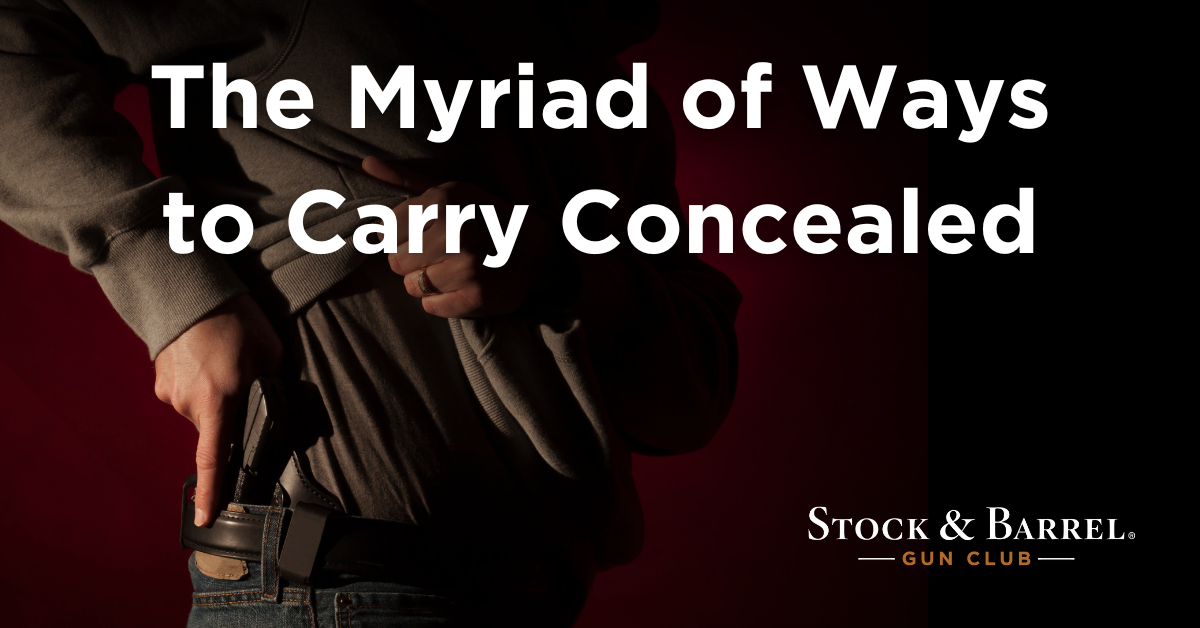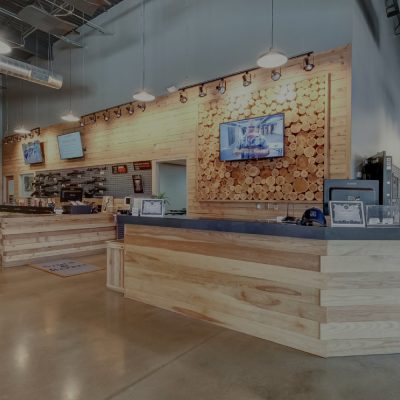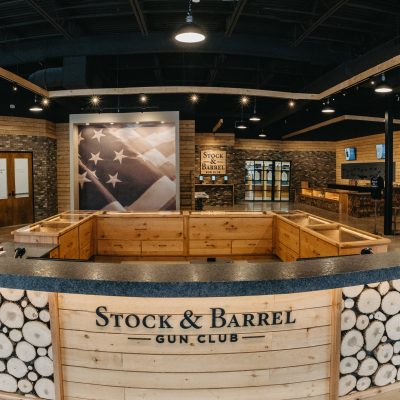The number of ways you can carry a handgun for personal protection is almost as vast as the number of firearms available to choose from. Since the advent of pistols themselves, humans have come up with a variety of ingenious and sometimes risky methods of concealing firearms. We’re going to focus on the concealed carry of handguns and the different methods rather than open carry, although they often overlap each other. Each method has strengths and weaknesses, and by the end, you’ll have a better understanding of which suits you best.
WAISTBAND CARRY
For centuries, the most common method for carrying pistols has been on a belt or in the waistband. If you imagine your belt buckle as “12 o’clock” on your waist, pistols are most often placed on the beltline between 3:00 and 5:00. This was made popular by the idea that you wanted the front of your body unemcumbered in a fight. Often in the past, firearms that were concealed in the waistband were small both in size and caliber. They were used either as a compliment to a larger firearm that was open-carried or on their own for use at a very close range, sometimes even within arms’ reach – also referred to as “contact distance”. For retention, you might be lucky to have friction from the holster itself to keep the gun from moving. But, many times, these tiny pistols were carried in a vest pocket or tucked into a cloth sash wrapped around the waist. This type of “unholstered carry” has inherent safety issues.
SHOULDER CARRY
Next up is shoulder carry. Typical shoulder holsters are made of leather and place the firearm in the armpit with the muzzle facing either vertically, with the muzzle pointed down the wearers’ body, or horizontally, with the muzzle pointing rearward from under the arm. If you’re wearing a jacket with an open front, a shoulder holster can be a solid option for concealment. The biggest hazard of shoulder holsters facing rearward is that anyone behind the person carrying has a firearm pointed at them the entire time. The draw can also be hazardous to both the individual carrying, and to the people behind and around them as the muzzle sweeps both the arm of the person drawing and everyone to that side of them.
ANKLE CARRY
Then we have ankle carry. Nowadays, ankle carry is mostly seen as the placement of a backup firearm, although this doesn’t have to be the case. Often using a neoprene or cloth holster, some of these also include a snap-closure retention strap similar to those on shoulder holsters discussed above. But many are just friction holsters. The biggest concern with the latter is if running or other strenuous activity is involved. From a safety perspective ankle carry isn’t as dangerous as shoulder carry, however, one should consider when crossing their legs where is that muzzle pointed. The biggest drawback to ankle carry, and the reason it’s used commonly as a secondary or last-ditch carry option, is the draw of the firearm. Typically, the most common draw taught regarding ankle carry is the pratfall or trick fall. This is where someone purposely or through being knocked down lands on their backside and transitions both hands to the ankle, one to clear the pantleg and the other to draw the firearm. For anyone with a fighting background, deliberately putting yourself in a position like that is commonly considered a last resort for good reason. Once on your backside, you give up the ability to move dynamically with your legs or run away.
THE OUTLAWS INFLUENCE ON CARRY
The more common forms of carry we currently see harken to the Prohibition era. During this time, police were open carrying in leather holsters with a snap on their 3:00. To gain an advantage in speed, gangsters would carry semi-auto pistols such as the 1911 in their waistbands at 1:00-2:00. This gave them faster access to their firearm in a head-to-head draw, often meaning that the gangster would come out on top even when drawing from concealment. This current en vogue term for this carry position is, “AIWB” or Appendix Inside the Waistband. Gone are the days of just stuffing it in the belt. Now there is a wide range of holsters specifically to carry around the 1:00 position that allows for ease of carry and drawing with minimal effort. There is absolutely an acclimation period to this type of carry, however, the safety hazards of AIWB need to be considered. Everytime you draw or reholster you’re pointing the muzzle of your handgun at some valuable real estate. There’s also significant blood flow from major arteries in the pelvic region. Being congnisant about reholstering using the AIWB method is key, as this is when the greatest risk is present.
Carrying at the hip still has a place. This type of carry is the way togo if you want the front of your body to be free and clear of obstruction. When heavy labor, particularly when a lot of squatting/bending is required, hip carry can also be preferable. The downside to this form of carry is especially apparent in vehicles. Whereas appendix carry allows you to access your firearm seated and even with a seatbelt on, getting to your firearm in a car seat at a 4:00 position is a challenge, even with practice.
Ultimately, your choice should be dictated by need. If you are unable to carry a certain way based on circumstances that’s entirely understandable. Regardless of what you carry styles(s) you use throughout the course of your life routines; you should be highly proficient in the concealment and draw skills required by each method. Being able to conceal and carry a firearm well is a process that is honed over years of trial-and-error, and it’s an ongoing process of improvement – just like most tasks related to firearms. The staff at Stock and Barrel are adept at all of these methods and implementation, they’ll be happy to help guide you in that process of making the choice of what’s right for you. Whatever that choice becomes, always be a student and make improvements in those methods.
OTHER ARTICLES YOU MIGHT BE INTERESTED IN:
- Concealed Carry Holsters For Women
- How To Pick The Best Concealed Carry Gun
- Sizes And Styles Of Handguns
CLASSES YOU MAY BE INTERESTED IN:
- Mn Permit To Carry in Chanhassen and Eagan
- Drawing From The Holster in Chanhassen and Eagan
- Drawing Under Duress in Eagan





